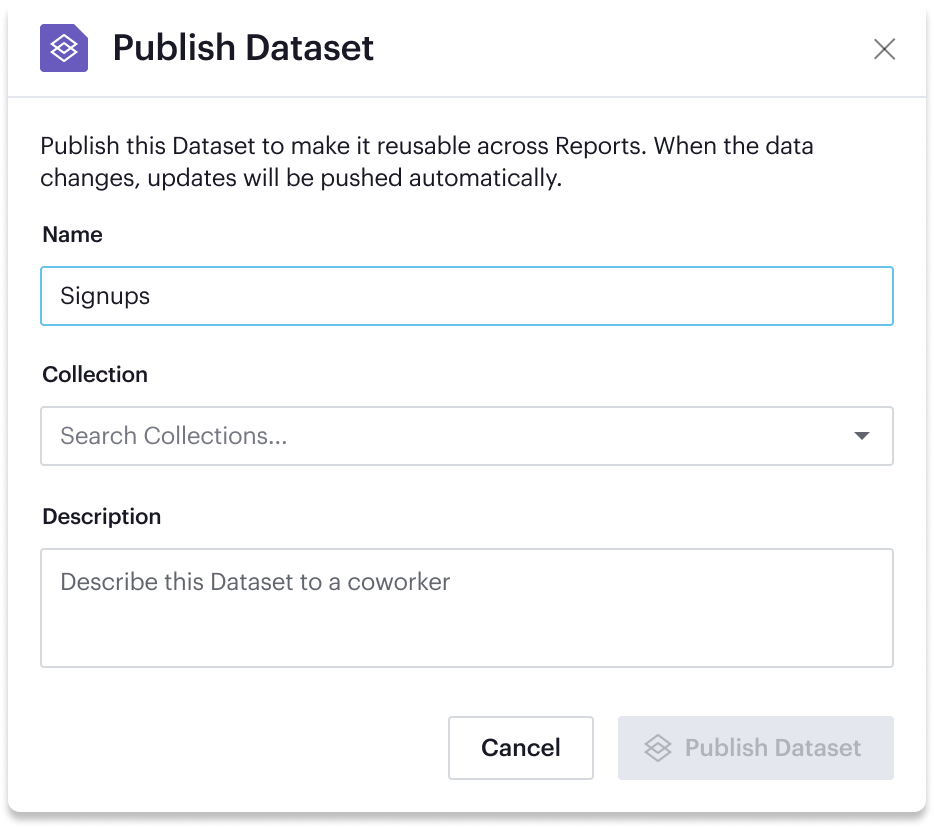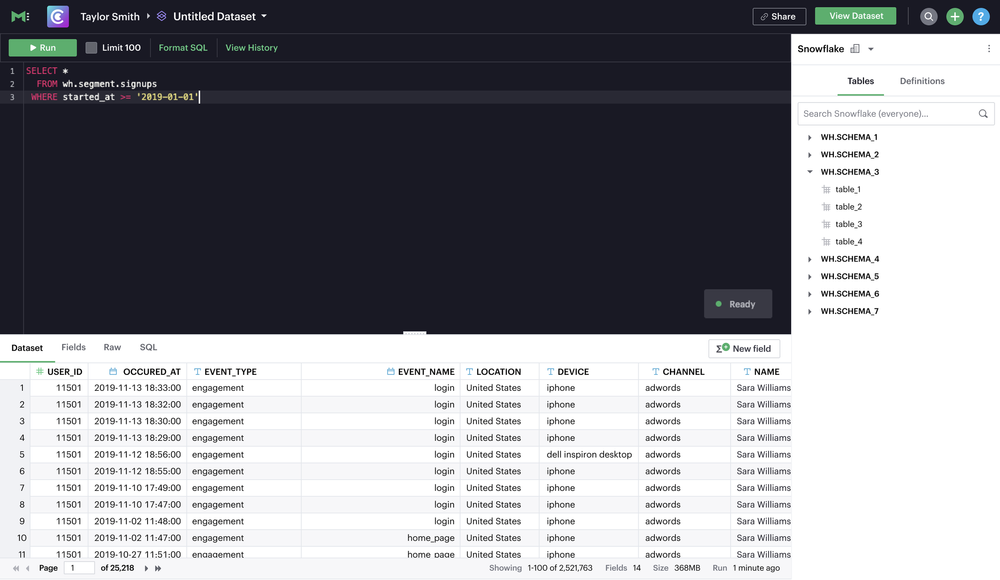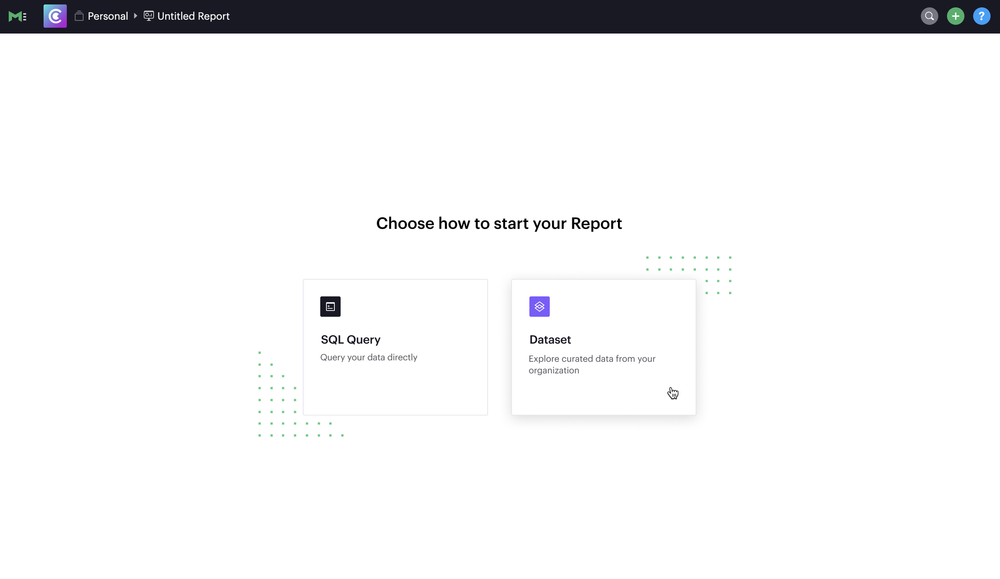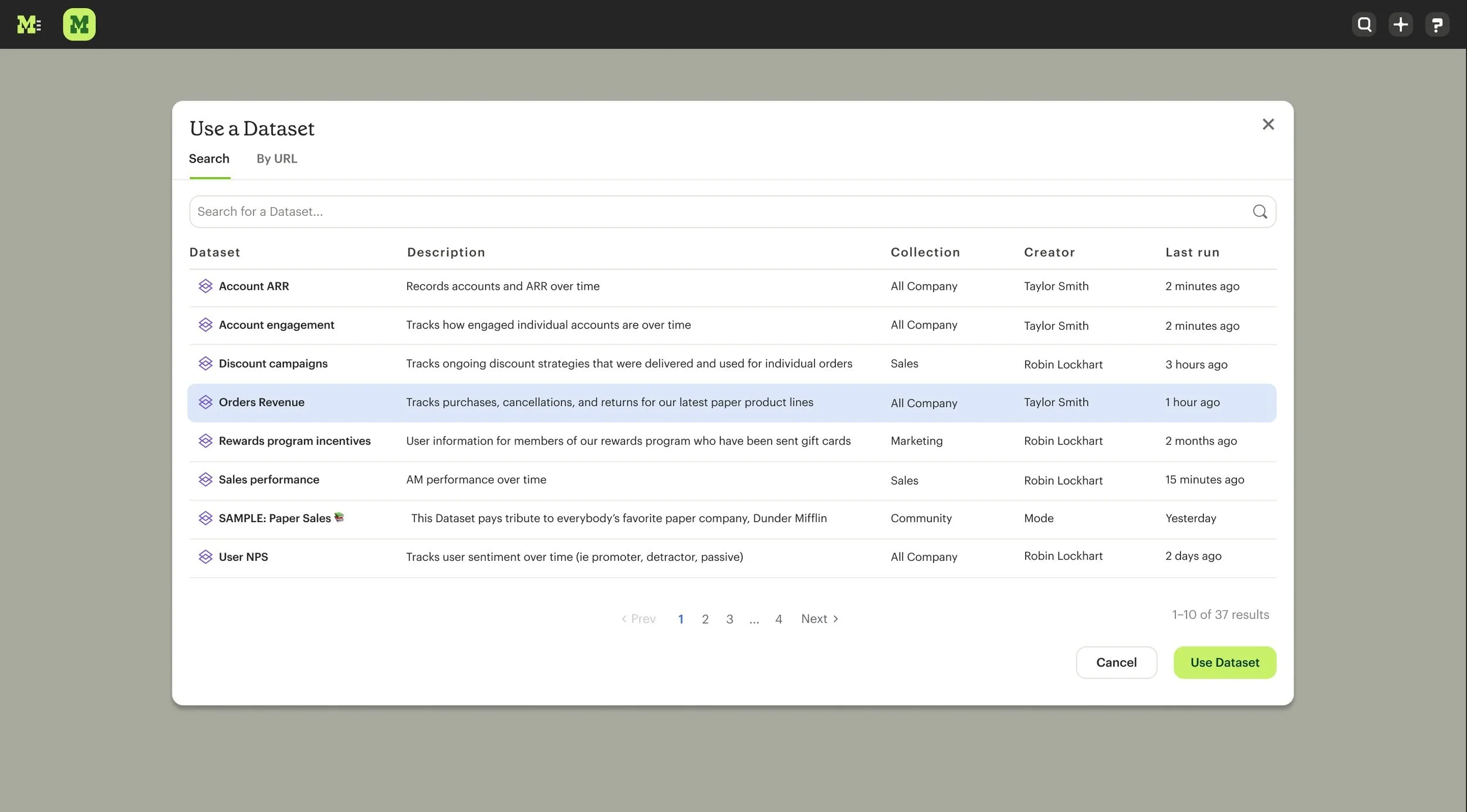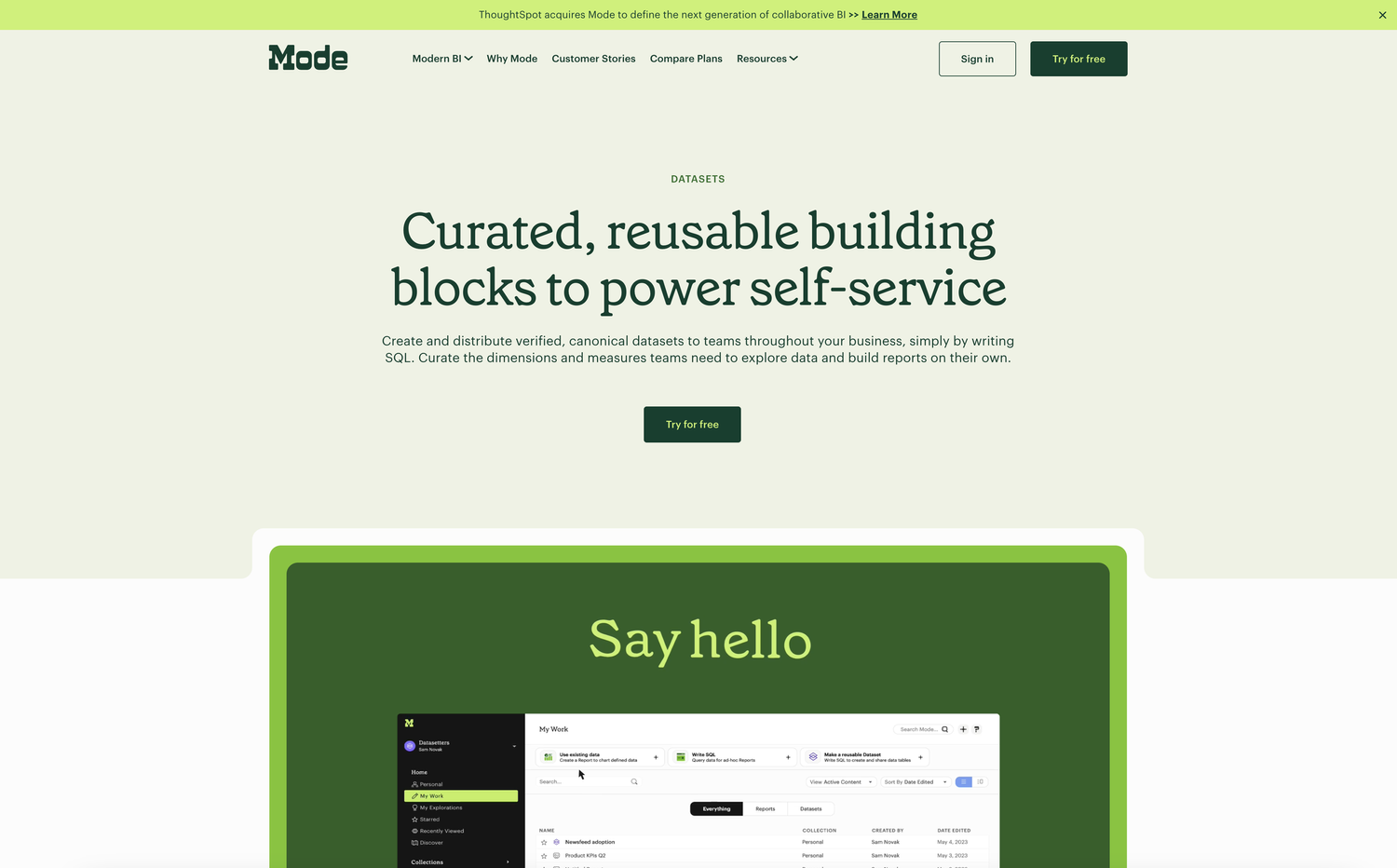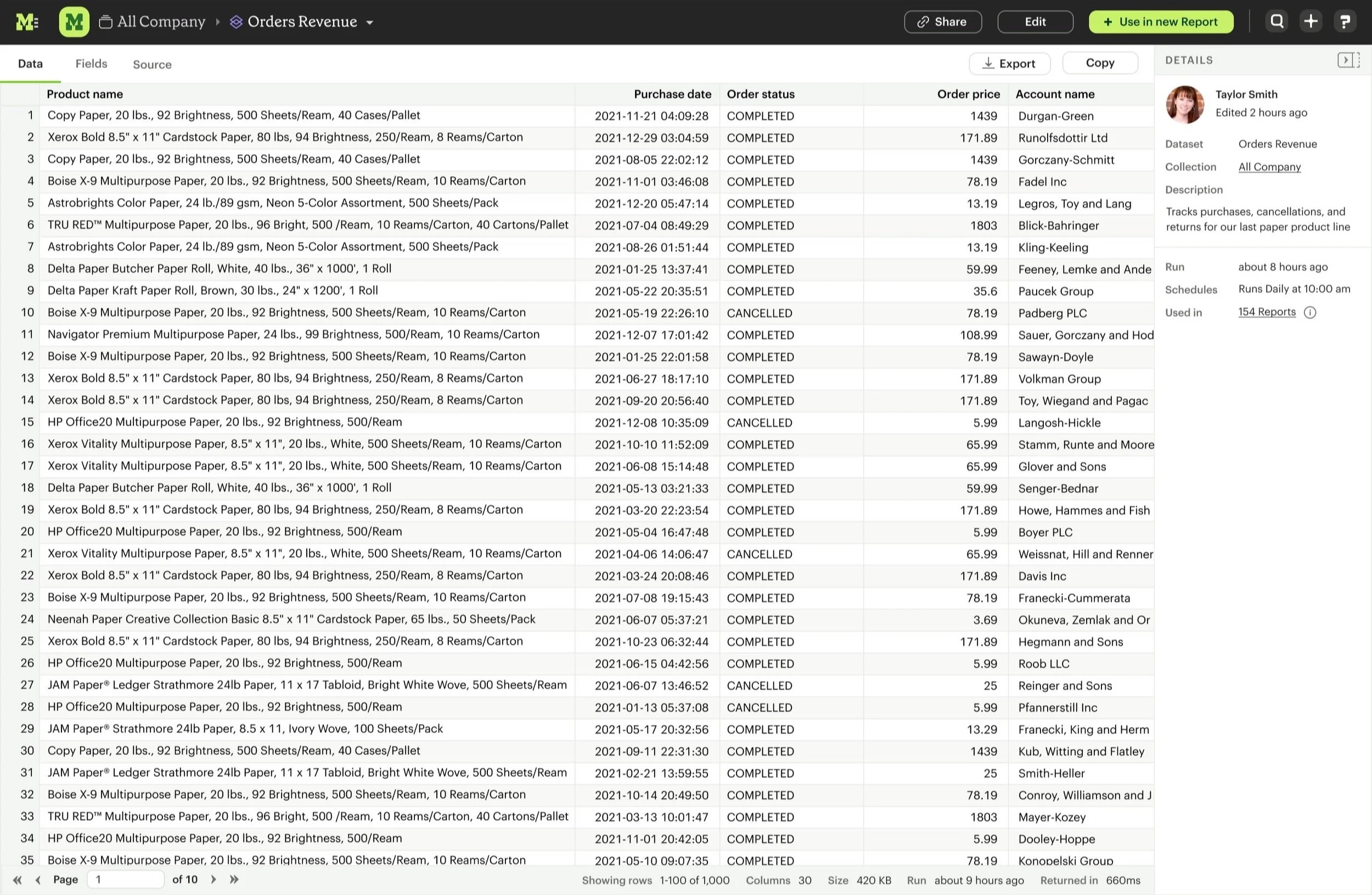Reusable Datasets: building blocks for business users
Goals
Improve analyst satisfaction by streamlining workflows and increasing productivity
Win deals by addressing "lack of self-service" concerns
Convert passive consumers into content creators, boosting seat sales
Focus areas
User research, prototyping
UX and UI design
Marketing and brand design
For 10 years, analysis in Mode began with SQL queries. Facing mounting pressure for self-service, we set out to design for business users through the lens of analysts.
Mode introduced Datasets to tackle two critical analyst needs:
the ability to reuse SQL query results across multiple Reports
a way to empower business users to explore data independently, freeing up more of analysts’ time for strategic work
Before designing anything, I first evaluated how Datasets might fit into our existing system architecture. Similarly, engineering began thinking about how to evolve our legacy dependency on queries.
Going into the project, Mode had a few organizational concepts:
Workspaces: an individual customer instance, housing users and their content
Collections: folders of Reports within a given Workspace
Reports: ad-hoc projects containing SQL queries, visualizations, and a presentational layer
Queries: the underlying building block for Reports
After many team and customer conversations, we decided Datasets should be organized alongside Reports within Collections. By coexisting, Datasets could act as standalone team deliverables while also enabling their outputs to function as reusable building blocks within Reports. This, however, posed many challenges: from communicating data dependencies to maintaining clear data governance practices.
I led rapid iterative prototype testing with customers to de-risk feature development, focussing on three key tasks: creating, using, and governing Datasets.
These prototypes helped uncover hiccups in the primary workflows and informed which features were critical for an MVP candidate.
Key features we landed on:
a Dataset editor for query creation and result preparation
a “Data View” component, replacing our legacy query result grids for better data prep and metadata insights
flexible scheduling to cache results for reuse, reducing cost and improving performance
updated creation CTAs to enable code-free Reporting
Design considerations also included:
elevating Datasets to signal their importance compared to ad-hoc Reports and queries
balancing power user shortcuts with approachable, no-code entry points for business users
We delivered early iterations of Datasets to a subset of our customers through closed Alpha and Beta programs, ensuring that even as engineering undertook extensive rewiring of Report features, the end product would align with user expectations.
These programs surfaced challenges around existing customer expectations. Understandably, users expected Dataset-powered Reports to provide the same level of functionality as query-backed Reports. Though it seemed like a straightforward ask, it required a tremendous amount of rearchitecting. With engineering heads down on enabling existing features, we had to be extremely thoughtful about which net new functionality we could also commit to building.
On the design front, feedback also highlighted significant entry point confusion, particularly in how users initiated content creation workflows using Datasets. Analysts voiced concerns that simplifying things for business users would compromise their own efficiency. In response, I took a second pass at our entry points, focusing on more clear and intuitive calls-to-action so that both user groups could quickly get started.
The launch of Datasets coincided with a company-wide rebrand, in an effort to reposition Mode as a true BI tool, centered around analysts.
In addition to rebranding all of our Dataset components, I collaborated closely with our GTM teams to help develop new onboarding content and marketing pages.
Together, the rebrand and Datasets launch helped position Mode as a hybrid tool that served both code-first analysts and no-code business users. This dual focus not only improved customer satisfaction but also strengthened Mode’s competitiveness in the market by addressing the evolving needs of data teams, ultimately leading to an acquisition by ThoughtSpot.
If you’re the one who needs to figure out why something spiked last week, you have to go deep - a basic line chart isn’t good enough. With Datasets, we can give our teams the level of detail they need to self-serve, in a way that can be easily updated by our team in one place.
Analytics Manager at Imperfect Foods

